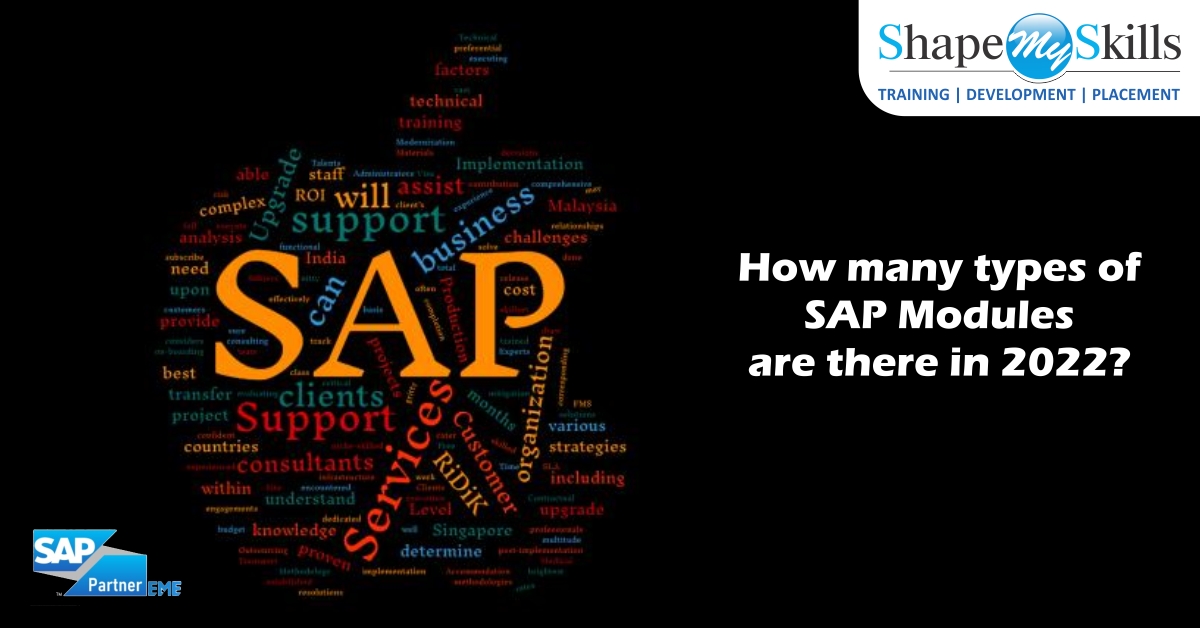How Many Types of SAP Modules are there in 2022?

SAP certificate tests test your knowledge of Enterprise Resource Planning solutions, usually SAP Training in Noida software. The Enterprise Resource Planning (ERP) system allows a company to manage multiple data in one place. Initially, ERP systems were designed for innovation control; However, over time, different software was developed to improve data management and workflow in businesses. As a result, ERP systems are available to many of the leading market providers today. SAP Online Training is one of the leaders in building enterprise software for corporate work and data management in organizations. SAP AG is a German multinational software company focused on business management software and improving business customer relationships.
SAP was established in June 1972. Since then, many SAP ERP development modules have focused on a variety of processes, including SAP ERP sales and service, sales and distribution, customer relationships, financial management, business intelligence, and more.
SAP Financial Accounting (FI)
As the name implies, the SAP FI module regulates financial transactions within businesses. The accounting module allows users to manage financial and business transactions in an integrated system. The module is useful when generating reports. The SAP FI module is highly flexible and can adapt to any economic situation. The implementation of SAP is useful for both small and large organizations to integrate various business data and legal requirements. The financial position of the business is determined in real-time with the Financial Accounting module. SAP FI integrates with SAP SD, SAP MM, SAP PP, Payroll, and more for better results.
SAP (CO) Management
Another important SAP module provided to businesses is SAP CO., A control module that supports business planning, reporting, and monitoring. The control module also helps businesses track financial costs. Scheduling, tracking, performance, and reporting costs are possible with the control module. Control includes managing and refining key data covering cost features, cost centers, profit centers, internal orders, and workplaces.
SAP Sales and Distribution (SD)
SAP SD modules handle all types of transactions, such as questions, suggestions, quotes, and pricing. They also provide asset management and control. They include key data, system configuration, and functions. In addition, the SAP SD module includes small components such as master data, sales support, sales, shipping and shipping, payment, credit management, and sales information system.
SAP Production Planning (PP)
The SAP PP module includes software specifically designed to organize and manage production. To complete the production process, this module will also integrate core data, system configuration, and transactions. Thus, while the SAP PP module is associated with key data, sales, and operations, distribution resources planning, material needs planning, Kanban, and product cost planning, it also has an impact on business productivity management.
SAP Materials Management (MM)
As the name suggests, SAP Material Management (MM) manages the necessary, processed, and commercially available materials. With this program, different purchasing processes can be managed. The sub-components of the SAP MM module include vendor master data, usage-based planning, purchasing, asset management, invoice verification, and so on.
SAP Quality Management (QM)
The SAP QM organization module facilitates quality management in all processes. The quality management module allows an organization to accelerate its business through a systematic and effective quality management system in a variety of ways. SAP QM deals with procurement and marketing, manufacturing, planning, evaluation, reporting, control, audit management, etc.
SAP Human Capital Management (HCM)
In the enterprise HR department, SAP HCM improves work processes and data management. From hiring to testing This system takes care of everything from his or her performance to managing promotions and compensation, to salary management, and other HR-related activities. The system maintains it to control the details and flow of important service activity, i.e., human resources.


